The first time I saw the work of writer/director JEFF WADLOW was some fifteen years ago with his feature directorial debut, Cry Wolf. I liked what I saw on multiple levels. Shifting gears from the horror genre, Jeff then delivered Never Back Down showing he had the chops for real drama. And then he exploded as writer and producer of Bates Motel and as writer/director of Kick-Ass 2. With each step he took, each new project, we saw new colors of his creative talents come to life. Jeff Wadlow knows character and he knows story, but above all, he knows how to meld the two into cinematic storytelling. And that’s what he delivers with FANTASY ISLAND.
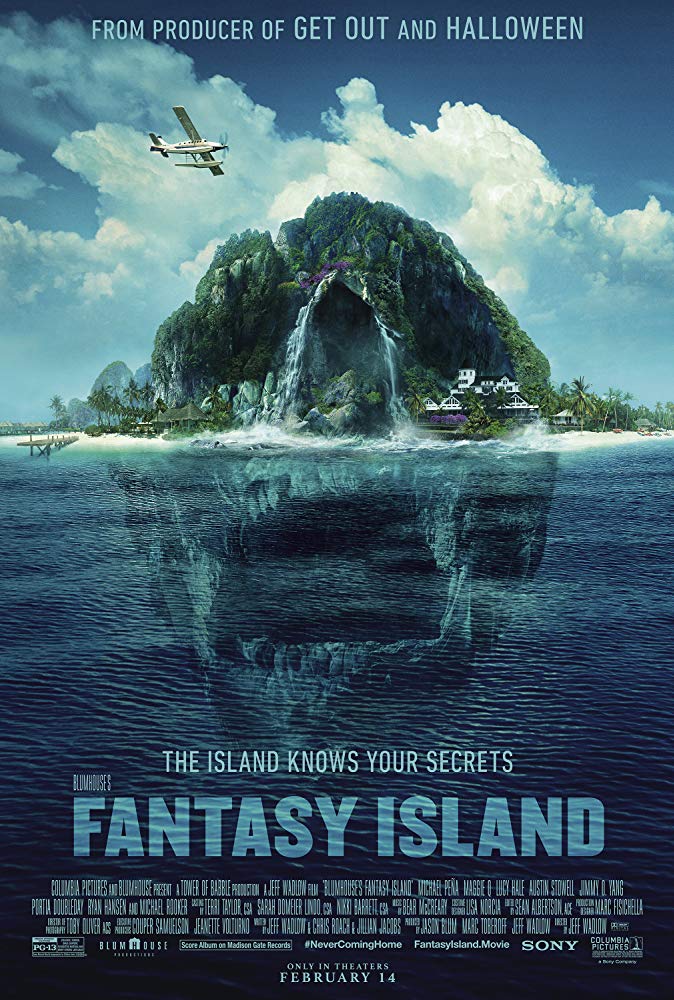
If you were alive and old enough to be watching television in 1977 when the Spelling-Goldberg series Fantasy Island rocketed to the top of the tv ratings on Saturday nights where it remained until 1984 when the series ended, you know the premise of FANTASY ISLAND. For a price (depending on what one could afford), guests were whisked off to Fantasy Island where the mysterious Mr. Roarke would grant their fantasies. However, there were rules and the rules had to be obeyed with each fantasy playing out to its natural conclusion, no matter how dark or what the consequences, although most fantasies had happy satisfying results. And, of course, quite often moral lessons were involved along the way.
Now, leave it to Jeff Wadlow and Blumhouse to expand on that successful and intriguing television premise and bring FANTASY ISLAND to the big screen with a film that reels you in with a plot and individual fantasies that twist and turn, pushing the envelope of fear, terror, and retribution, scaring the pants off you more than a few times, while also creating moments that tug at the heartstrings, elicit tears and require tissues, and even making you laugh a bit. Staying true to the core elements of the original series, the touchstones are bountiful, providing nostalgic joy while the production values are elevated with the individual fantasies emotionally intricate, deep, and in some instances, physically complex and extremely horrifying. Boasting a cast that includes Michael Rooker, Maggie Q, Jimmy O. Yang, Ryan Hansen, Austin Stowell, Lucy Hale, Portia Doubleday, Jim Coates, and Michael Pena as Mr. Roarke, FANTASY ISLAND fulfills my fantasy for a well-done and entertaining film that revisits and reinvents the past by pushing the envelope for the present.
I sat down with the ever-affable and engaging JEFF WADLOW for this exclusive interview, talking about FANTASY ISLAND and the cinematic elements that make both the film, and the island, live and breathe. . .
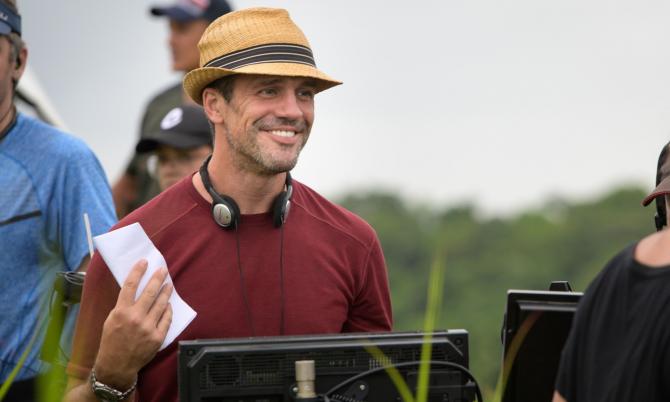
Jeff, I am a huge fan of the original 1977 series “Fantasy Island.” I’ve seen every episode countless times, so it pleases me immensely to say that I am beyond thrilled with this film and what you have done. You have honored every touchstone of the show, right down to Bear [McCreary] including the musical motif of the original theme music in the opening. And that just made me smile.
Oh, good! That actually happened before Bear got involved in the project. That was something that we did. I felt that as much as I love the Sony fanfare, making a scary movie, it just kind of set the wrong tone. So I had this idea to use the elevator music from the cut where we hear the Fantasy theme. And actually that’s where it first showed up because Sean Albertson, my editor, wanted to use it earlier and I said, “No, no, this is where we’ll use it. We’ll use it in the elevator.”
It just made me so happy to hear that. But then you also stayed true to the series and “the rules.” You’ve got Mr. Roarke in white. You’ve got the seminal lines – “The plane!” Okay. We hear it once. We don’t hear the “the plane, the plane” initially, but later you do.
Yes. You do hear it later. Jimmy O. Yang says, “The plane, the plane.”
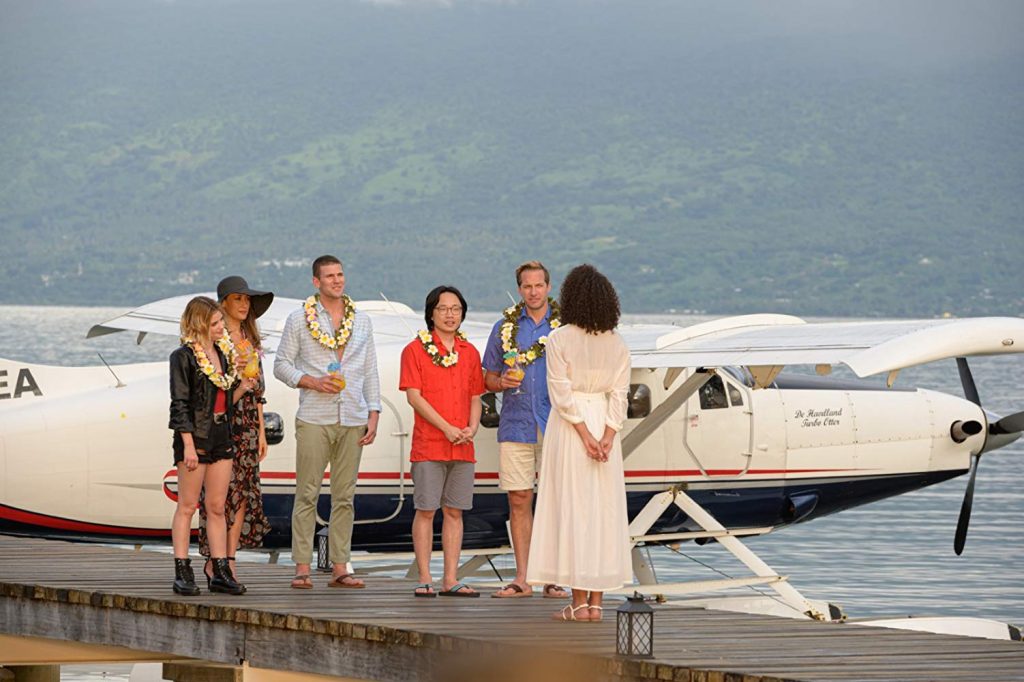
I never thought I would live to have a Blumhouse movie make me cry. But you do. You just tug at the heartstrings in this film. The photograph scene, of the two photos, the whole backstory that you give to Mr. Roarke, and then you’ve got Austin Stowell’s character of Patrick and his fantasy. I was bawling. You hit every mark and you stayed so true to the tenets of the show. The rules of “Fantasy Island.” No interference with a fantasy. It’s got to play out no matter what it is. And I know a lot of people who aren’t familiar with the original series don’t know that it went to very dark places.
Yeah. Oh, it makes me so happy, Debbie!
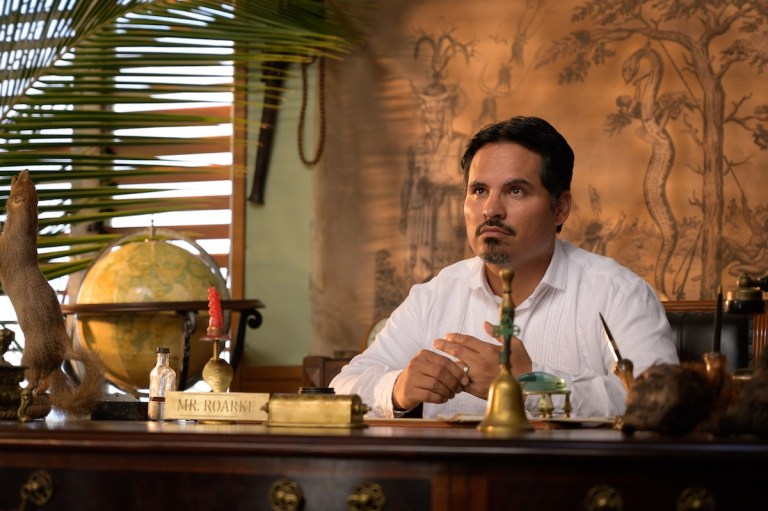
So this is the natural step and the way you have brought it to life visually is wonderful. How did you and Toby [Oliver], whose work I’m in love with, how did the two of you go about creating the visual tonal bandwidth of this film to focus on the four fantasies but make them all cohesive and bring them all together?
Before I answer your question, I have to profoundly thank you. That is some of the nicest feedback I’ve ever gotten on any project I’ve ever worked on. You almost brought me to tears just with your description and whenever I read a bad review, I’m just going to think about what you said to me. I might even call you and just ask you to say that again. It was really so kind of you. And I just want you to know how much I appreciate it. I can tell you’re sincere. I can smell bullshit and you’re no bullshitter. So thank you very much for that. It means the world to me.
It was not an easy movie to make. Originally, I was working with a DP named Will Arnot, who’s credited as an additional operator DP. He actually shot the first two weeks on the island. Will’s a great guy, but the production proved to be bigger than either of us thought and he had not DP’d a movie before and we needed some help. So Toby parachuted into Fiji and did the last five weeks with me. So it really was a collaborative effort. The camera operators, Pete McCaffrey, who was our A camera operator and a legendary QE operator, contributed a lot to the look of the film. So we all had something to say and brought our best ideas to the table. And when you’re making a Blumhouse movie, you can start with some big ideas, some sort of grand pronouncements, but really what happens is you’re under the gun and you go with your gut. You go with your gut. And a lot of what works about the film is that we were just up against the wall and I had just a great cast and a great crew and they trusted me and I trusted them and we just sprinted.
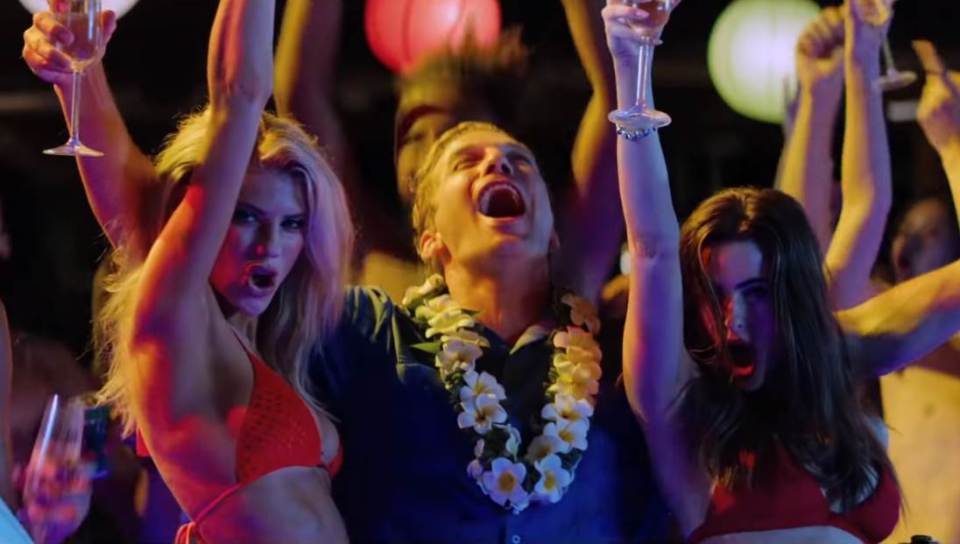
Something that you do which adds to the film’s metaphor is color. You use color as part of the storytelling which is so evident from the start and in the initial party scene with Brax and J.D. The first thing we see is all this red and yellow, red and yellow. Stop. Caution. The metaphor cries out! Then we have Brax going into, opening it up to, the pot room and it’s all green. Green is go. Go ahead. It also ties in with the island itself, the greenery, the lushness. I was just in love with this.
I know! And the doors that Maggie [Q] goes through are emerald green, right? So green became a major motif for the movie because it is an interesting color. It’s a color you associate with nature. It’s soothing. But it also makes me think of the Garden of Eden and temptation. It’s where a lot of the snake imagery came from. It also feels quite mystical. You associate it with sort of jade and something that has a supernatural quality to it. Something precious. So green was a very important color in the film, for sure.
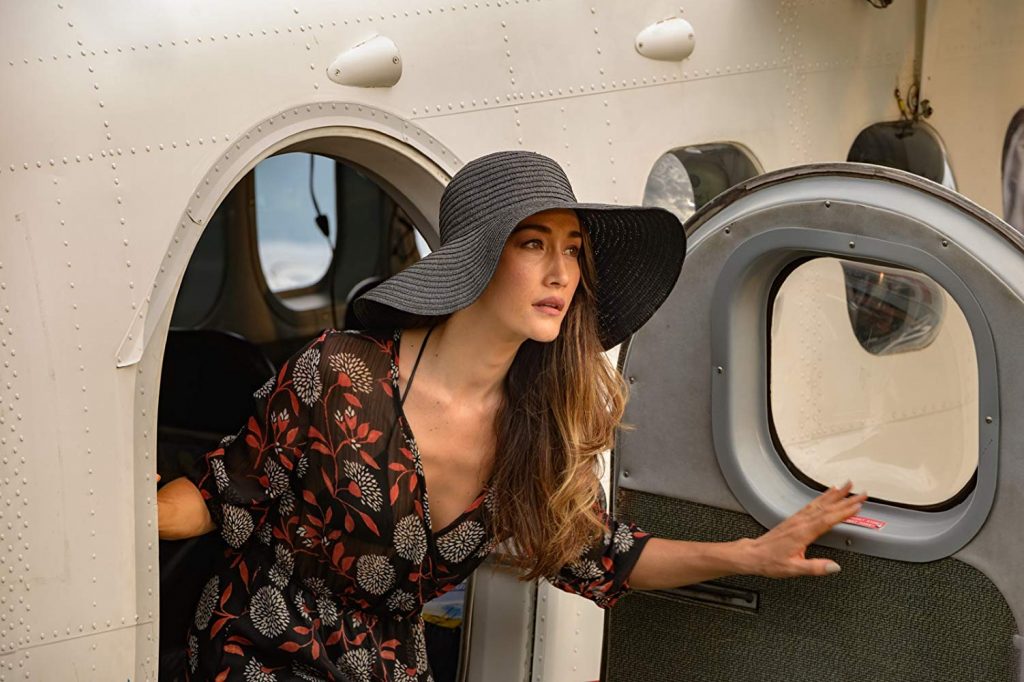
Absolutely. And I love seeing how you use variations of that throughout the film. But also with the reds and yellows, we come back to that with fire. But all of it, it’s all grounded in the earth. That is something that also elevates this from the TV series because we really get that connection to fantasies and fears are really grounded in the road that we walk.
Thank you. Yeah. Let me back up for a second. So the way the movie came into existence is I had this idea for a story about a place where you could go and it was almost like a haunted house and it would manifest your trauma. It was a way to kind of have therapy and to have these ghosts from your past, not literal ghosts, but these terrible things that could have happened to you happen again in a way for you to redo them and try to do things differently and battle your fears. And that this house, this place was run by this sort of Tony Robbins-like person whose mission was to help you get over your shit. When Jason [Blum] heard I had this idea, and he knew that it was inspired by Fantasy Island, he went out and got the rights to Fantasy Island. He said, “Let’s just do Fantasy Island.” And so ultimately that’s how this movie came together. So what you’re saying really resonates with me because we did want the movie, even though it has this sort of fantastical, literally fantasy elements, we wanted it to be grounded and feel of the earth, of a reality that we could all connect to and that the characters were real and they’re dealing with real issues.
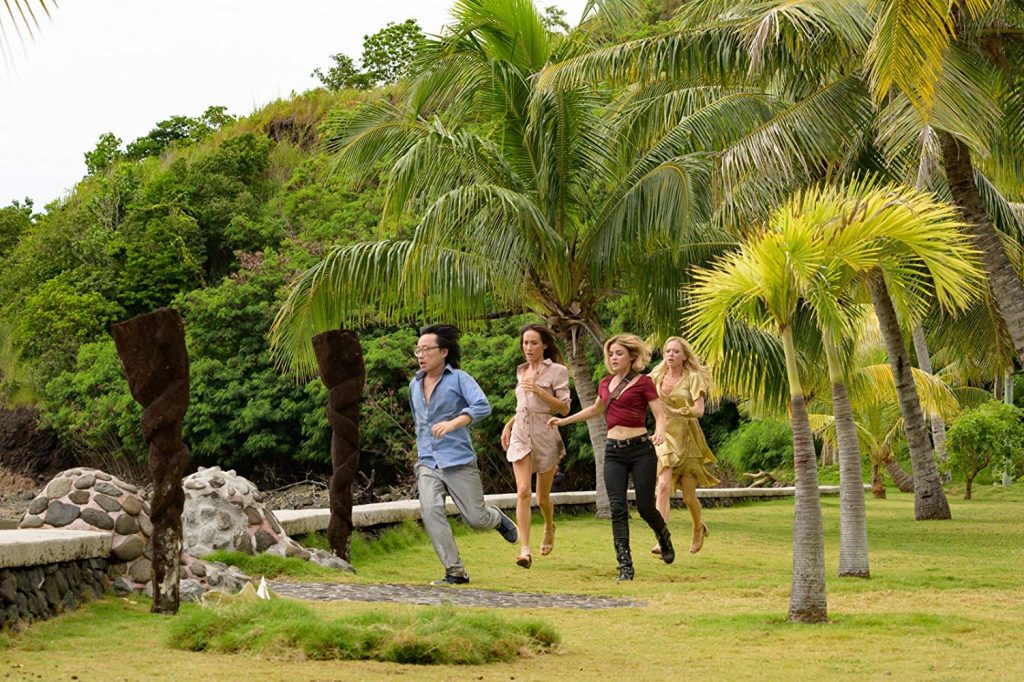
And speaking of those issues, the fantasies. These are very distinct issues. One is regret. One is greed. One is revenge. One is desire. Some of the key vices in the world. How challenging was it for you and Chris [Roach] and Jillian [Jacobs] to sit down and construct the individual fantasies and then interweave them so that, as with the show, everybody comes together?
Where to begin? So Chris and Jill and I have written a bunch of scripts together and the way we write is we do a little mini writers’ room. So Carlton Cuse, who was the showrunner with Damon Lindelof on Lost, is a mentor of mine. I worked on Bates Motel with him and I worked on The Strain with him. And I’ve learned so much from Carlton about not just writing but producing and running a writers’ room, so when I work with Chris and Jill, we approached the script as if we’re doing four episodes of a streamer, right? So act one is an episode. Act two A, act two B, act three… And when we break them, we then do the cards on the wall and then we do outlines and we each do a draft of the act and we pass them around. And that’s how we do it. Like we’re writing a TV show. So when we started to think about the fantasies, it was really important to me that we make the structure of the show work before we break the structure. And what I mean by that is I wanted to tell the story of individual fantasies and I wanted them to feel like they would work if they were just an episode in the show so that they would run their course. That people would say what they wanted, they would get what they wanted. It’d be twisted in some surprising way but they would ultimately get what they need if they survived and they would learn a lesson. And I wanted that to work for each of the four fantasies before we broke the structure, before we have them collide. Because as you know, the fantasies never crossed in the show. I think by design, you saw one guest get off the plane, you saw another guest get off the plane. By design, they always intended to cut them down to standalone half an hour episodes because Spelling was selling them overseas as half hours. So I wanted to make sure the structure worked before we broke it. We had to come up with fantasies that would just work for another episode, is how we looked at it. So then we started looking at all the fantasies that were in previous episodes. We picked the ones we liked the most. Then we started coming up with new ones. A fantasy and a twist, fantasy and a twist. And we came up with 10 or 12 that we liked and we picked our four favorites. And then we started to talk about how they could cross. I’d always had this idea for a larger thing going on. I don’t want to say too much about it. I don’t want to ruin it. We started to try to work them to figure out how they could feed into this larger idea, this larger plan. It was just a very organic process.

Wow! It’s nice to know you pick 10 or 12 that you liked. There’s hope for my fantasy of a franchise!
People have asked me about the sequel and I will say this, I think when you plan for sequel, there usually ain’t a sequel, so I try to make sure if there’s a good idea it’s in the movie and that the movie feels transformative. It’s not just like a first chapter, but that we’ve seen a definitive arc. That there’s been a beginning, a middle and an end. And everyone involved, if they survive, is forever changed by what has happened because that’s what a satisfying movie is and I want to make a satisfying movie. If people like the movie and we have a chance to go back to FANTASY ISLAND, of course, I would love to.
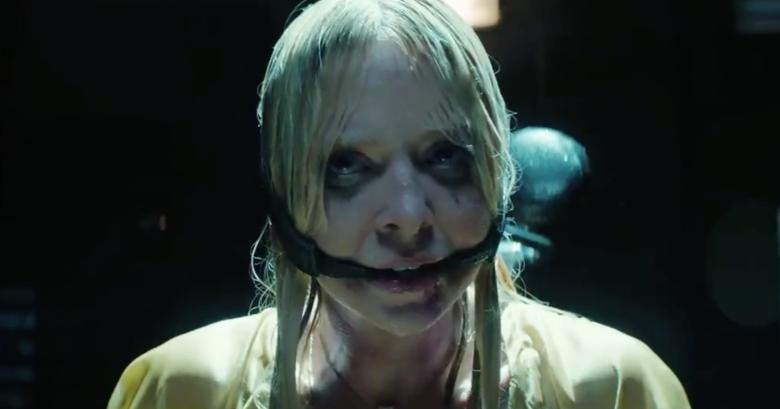
I’ve got to ask you to go back to Bear [McCreary] for a minute because the music is fabulous. I’m curious as to your conversations with him and what you were looking for because I’m picking up a lot of percussion, but it’s all done with woods. It’s not done with what people think of typically as percussion. And the rhythm and the cadences that he comes up with within the instrumentation, it’s almost like a heartbeat, a heartbeat of the island. So I’m curious what you were looking for with Bear for the music.
Bear is just an incredible artist. He’s brilliant. And he’s more than an artist. He’s a storyteller. We had one or two maybe initial meetings where we talked about the palette and sort of assigning different instruments and different ideas to different characters and different themes and shared a few references. But then he pretty much just went and did his thing. I didn’t really have to offer that much feedback. There were a couple of scenes where it was like, “I don’t know if that worked and I think we’re missing this one moment,” but by and large, he just told the story. He came to the process a little bit later than I like to have a composer join me and he had to work very quickly, so that was the downside. But the upside was the movie was pretty much cut and figured out at that point so he was able to watch it and sort of interpret the story that we were telling and very quickly amplify it and augment it with this beautiful score. And it’s funny he said to me he had “no more tools left.” There’s a moment at the end of the movie where I was like, “Well, you did this one weird thing. Can’t we do something else here?” He’s like, “Jeff, I got nothing left. This is four different movies. I’ve composed four, arguably five, different scores for this film. I’m using every tool in my tool chest right now and that’s the last one. I have to use that one there because that’s all that we have left in the box.” I was like, “Fair point there. Fair point.”
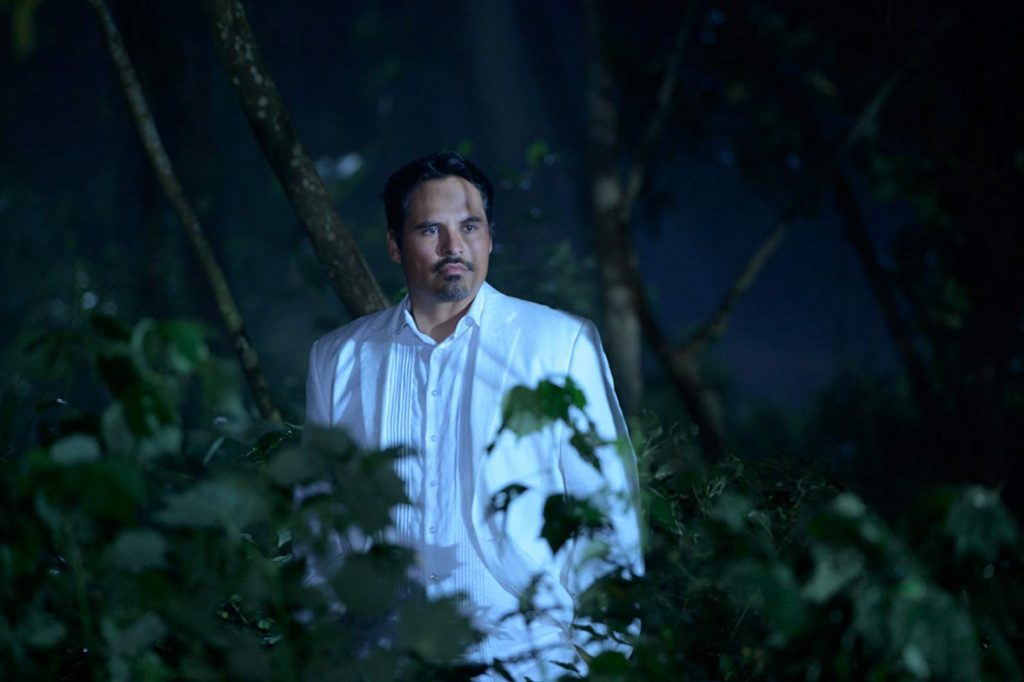
With everything that you’ve done, Jeff, this one I have to say is my personal favorite. But what did you, with all the challenges of Fiji and the location and people coming in late and switching people out, what did you learn about yourself as a director making this film that you can now take forward into your future projects?
Whew! I would say what I learned about myself as a director is that you’re only as good as the people you have around you. I used to think that I could fill in the gap. If there was a problem, I would figure it out or I would solve the problem myself. And it’s funny because that runs contrary to this philosophy I have which is, I love filmmaking because it’s collaborative art. Right? I love the idea that we’re all contributing to this stew. And so what I learned on this film is that if someone isn’t contributing, I’ve got to find someone who will. And it’s a hard lesson, but it’s an important one. I’ve been very lucky in that I’ve been able to start to collect some contributors who have worked with me for multiple films, James Moran, my first AD, Sean Albertson, my editor, and I hope to continue to do that because there are so many great storytellers out there, so many fantastic collaborators. When you find a good one, you got to hold onto them.
by debbie elias, exclusive interview 02/11/2020












